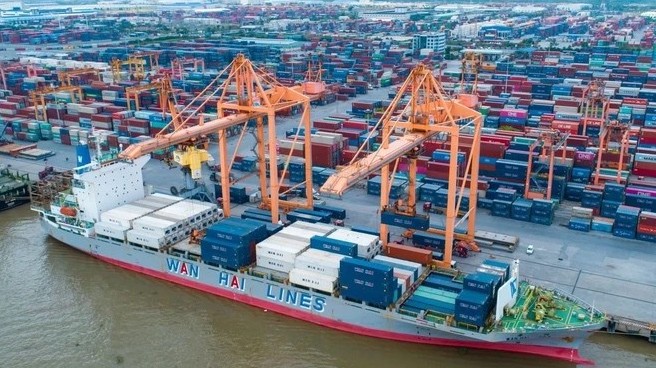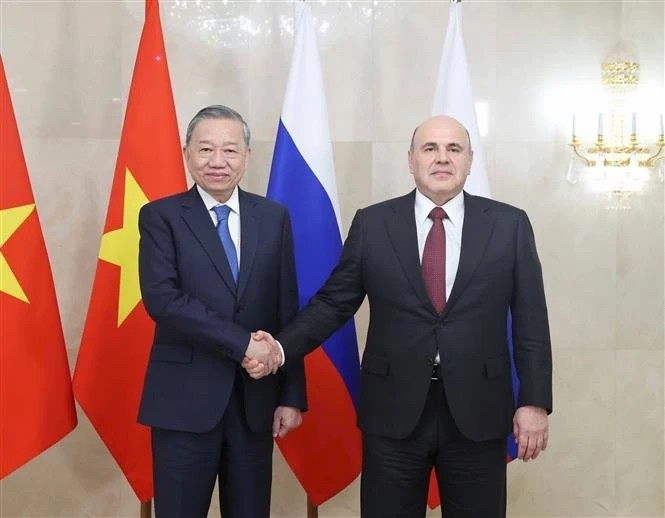Vietnam News Today (Feb. 6): Vietnam-India Trade Hits US$15 Billion in 2024
| Vietnam News Today (Feb. 6) notable headlines Vietnam, New Zealand hold 13th political consultation Vietnam-India trade hits US$15 billion in 2024 Vietnam aims for 8% economic growth with comprehensive solutions January FDI into Vietnam up nearly 49% year-on-year Northern Vietnam braces for severe cold, temperatures drop below 2°C Economic recovery on track, government says at monthly meeting Osaka event honors Vietnamese language, culture Vietnamese Party’s 95th anniversary marked in Indonesia Vietnam - China economic cooperation yields considerable gains |
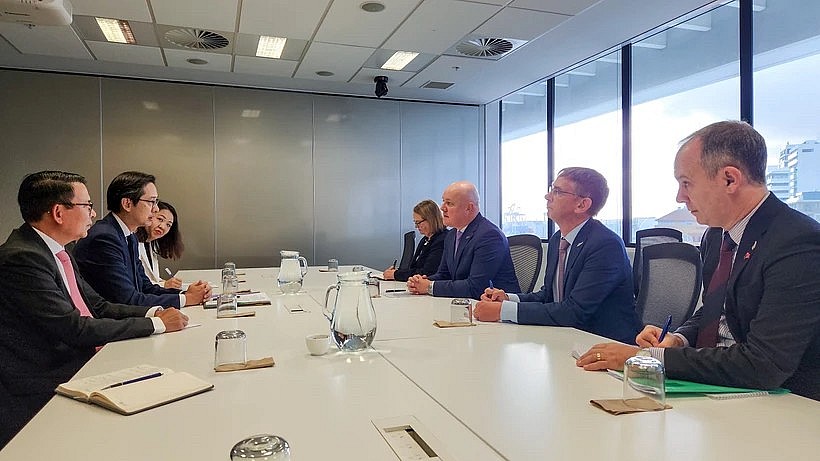 |
| Deputy Foreign Minister Do Hung Viet pays a courtesy call to New Zealand Prime Minister Christopher Luxon. (Photo courtesy of the Ministry of Foreign Affairs) |
Vietnam, New Zealand hold 13th political consultation
Vietnam and New Zealand agreed to enhance political trust through more bilateral exchanges and consultations, strengthen defence and security cooperation, and strongly implement practical measures to facilitate market access for each other's products, aiming to reach the trade target of 3 billion USD.
The events formed part of Viet's visit to the Oceania country from February 3 to 5 under a program for ASEAN guests of the New Zealand Prime Minister.
At the political consultation, where Viet was joined by Deputy Secretary for Americas and Asia Group at the New Zealand ministry Grahame Morton, and the working sessions, the two sides reaffirmed their commitment to coordination to organize activities celebrating the 50th anniversary of the countries' diplomatic ties this year, particularly the coming high-level visits.
They agreed to enhance political trust through more bilateral exchanges and consultations, strengthen defence and security cooperation, and strongly implement practical measures to facilitate market access for each other's products, aiming to reach the trade target of 3 billion USD.
Additionally, Vietnam and New Zealand agreed to expand collaboration in climate change response, energy transition, science and technology, innovation, and digital transformation, establishing these as new pillars of bilateral relations to help leverage their strengths and potential.
New Zealand reaffirmed its commitment to continuing to carry out the official development assistance (ODA) projects on the environment, climate-resilient agriculture, and energy transition in Vietnam as well as the Mekong Sub-region. It also pledged to support Vietnam in improving the agricultural sector's capabilities, training English skills for cadres, expanding the coverage of the New Zealand Government's scholarships, and fostering educational linkages between their universities.
Discussing regional and international issues of mutual concern, both sides agreed that the world and the region are facing numerous challenges, which require countries to strengthen cooperation, act responsibly, and respect the interests of small and medium nations. This will contribute to the common goal of maintaining peace and stability, facilitating cooperation, and promoting sustainable development in the region.
The two sides agreed to closely collaborate and support each other at international forums, particularly the United Nations and other cooperative mechanisms to which both are members, cited VNA.
New Zealand affirmed its support for ASEAN’s centrality and ASEAN-led mechanisms in promoting collaboration and shaping the regional architecture. The country also expressed appreciation for Vietnam's role as the coordinator of ASEAN-New Zealand relations for 2024 – 2027.
It also underscored its desire to further strengthen the ASEAN-New Zealand strategic partnership in the coming years through new initiatives, particularly considering the upgrade to a comprehensive strategic partnership in celebration of the 50th anniversary of their relations. The country affirmed to give high priority and allocate resources to practical cooperation with the bloc in general, and the Mekong sub-region in particular.
The two sides agreed on the critical importance of peace, stability, security, safety, and freedom of navigation in the East Sea. They stressed that countries need to respect international law and resolve disputes through peaceful means on the basis of international law, particularly the 1982 United Nations Convention on the Law of the Sea (UNCLOS).
During the visit, Viet paid a courtesy call to New Zealand Prime Minister Christopher Luxon, met with Minister for Climate Change Simon Watts and Minister for Defence, Cyber Security and Space Judith Collins, visited Auckland University of Technology, and delivered remarks at the New Zealand Institute of International Affairs and the Asia New Zealand Foundation.
PM Luxon expressed satisfaction with the strong growth of two countries' relations over 50 years of diplomatic ties (1975-2025) and five years of the Strategic Partnership. He welcomed the effective implementation of the agreements reached during Vietnamese PM Pham Minh Chinh’s official visit to New Zealand in March 2024.
The New Zealand PM emphasised the high level of political trust between the two sides, noting their similarities and significant potential for cooperation in emerging fields beyond traditional areas such as agriculture and education. He suggested that the two foreign ministries enhance exchanges and propose practical measures to elevate relations to a new height in the near future.
Vietnam-India trade hits US$15 billion in 2024
Two-way trade between Vietnam and India reached approximately US$15 billion in 2024, marking an annual increase of 4.5%, the General Department of Vietnam Customs reported.
Of the total value, Vietnamese exports amounted to US$9.06 billion, up 7.6%, and its imports fell 0.6% to US$5.83 billion, resulting in a trade surplus of US$3.23 billion.
Phones of all types and components made up the largest share of Vietnamese exports to India last year, fetching US$1.68 billion, or 17.5% of its export value.
They were followed by computers, electronic products, and spare parts with a turnover of US$1.5 billion, whilst machinery and other tools were worth US$947 million, according to VOV.
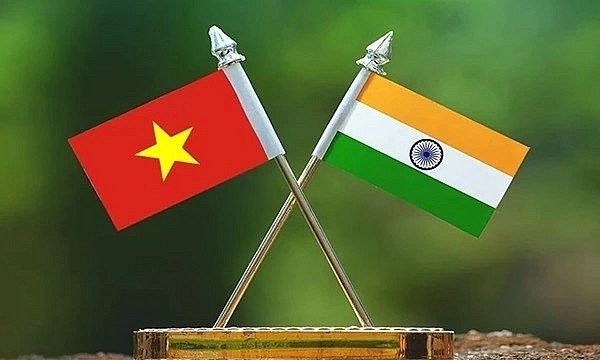 |
| Photo: VOV |
Statistics show bilateral trade has steadily grown over the past 25 years, from just around US$200 million in 2000 to US$15 billion in 2024, making India one of Vietnam’s eight most important trading partners.
Meanwhile, Vietnam is also one of four ASEAN countries to have the closest trade relations with India. In ASEAN, India is Vietnam's largest trading partner, accounting for nearly 80% of the country’s total export turnover to this region.
Vietnam aims for 8% economic growth with comprehensive solutions
Deputy Minister of Planning and Investment Tran Quoc Phuong has outlined a set of comprehensive solutions to propel Vietnam's economy toward an 8% growth this year, setting the stage for even higher leaps in the future.
To make this vision a reality, the Ministry of Planning and Investment has proposed adjustments to specific targets outlined in the National Assembly (NA)'s Resolution 153, which will be presented for approval at the legislature’s upcoming 9th extraordinary session, Phuong told a regular Government press conference in Hanoi on February 5.
The ministry is also drafting a separate Government resolution to realise the 8% growth target set by the Party Central Committee. This resolution will set specific growth targets for localities and assign key performance indicators for ministries and agencies. Local authorities are encouraged to aim for at least 8% growth to ensure everyone contributes to the national momentum.
Phuong underlined the need to refine legal and institutional frameworks and tackle bottlenecks in investment projects. By doing so, he said, Vietnam can quickly unlock resources and channel them into the economy, VNA reported.
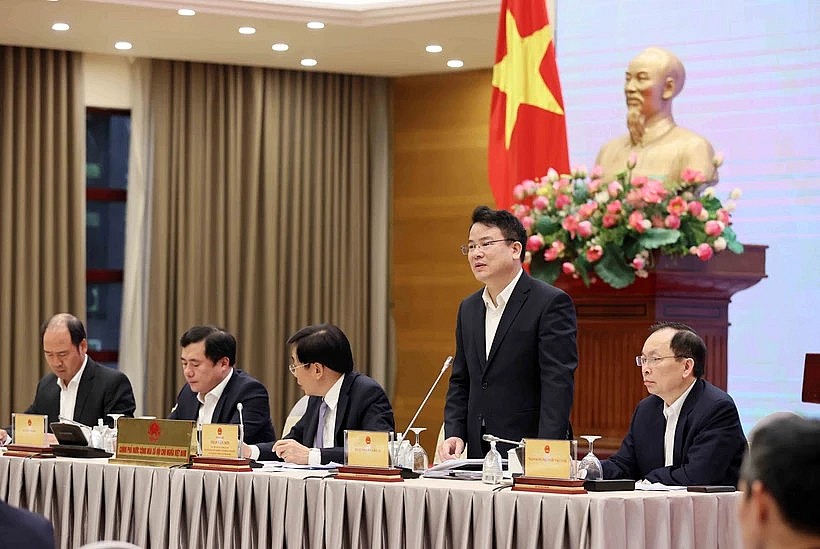 |
| Deputy Minister of Planning and Investment Tran Quoc Phuong speaks at the press conference (Photo: VNA) |
The Prime Minister directed efforts to reduce regular expenditures to less than 60% of the state budget, thereby freeing up more funds for investment.
To accelerate the use of public investment, construction on key railway projects, including the Lao Cai – Hanoi – Hai Phong and Hanoi – Lang Son routes, will soon begin. State-owned enterprises (SOEs), particularly leading ones, are also encouraged to spearhead large-scale projects with substantial spillover impacts to drive investment growth.
To attract more private and foreign investment, especially in hi-tech, Vietnam is rolling out a green lane policy. Technology parks, industrial and hi-tech zones will serve as key growth engines, enhancing competitiveness and fostering sustainable economic growth.
Other solutions to increase exports, domestic consumption, tourism, and industrial production were also highlighted.
According to him, Vietnam's strategic advantage in the global technology landscape, particularly in artificial intelligence (AI) and other advanced technologies, presents a vital opportunity for sci-tech breakthroughs. This momentum can drive new growth and innovation.
On the financial front, Deputy Governor of the State Bank of Vietnam (SBV) Dao Minh Tu announced a 16% credit growth target for this year.
The SBV's agenda includes inflation control, currency stabilization, growth support, and maintenance of the economy's major balances.
Monetary policy will be flexibly yet tightly managed, in harmony with fiscal and other macroeconomic policies. A balanced interest rate approach will be used to draw capital, with suitable refinancing tools ensuring liquidity for commercial banks, he added.
January FDI into Vietnam up nearly 49% year-on-year
Vietnam raked in US$4.3 billion in foreign direct investment (FDI) in the opening month of this year, representing an increase of 48.6% against the same period last year, reported the Foreign Investment Agency (FIA).
Of this figure, foreign investors registered nearly US$1.29 billion in 282 new projects, a decrease of 43.6% in capital and down 6.6% in project numbers.
They also injected an additional of approximately US$2.73 billion, 6.1 times higher than January 2024, into 137 projects, up 4.6% year-on-year.
The remainder came in the forms of capital contributions and share purchases by foreign investors with total 260 transactions worth US$322.9 million, down 12.2% in number but up 70.4% in value from January 2024.
Foreign financiers injected their capital into 16 out of 21 economic sectors, according to VOV.
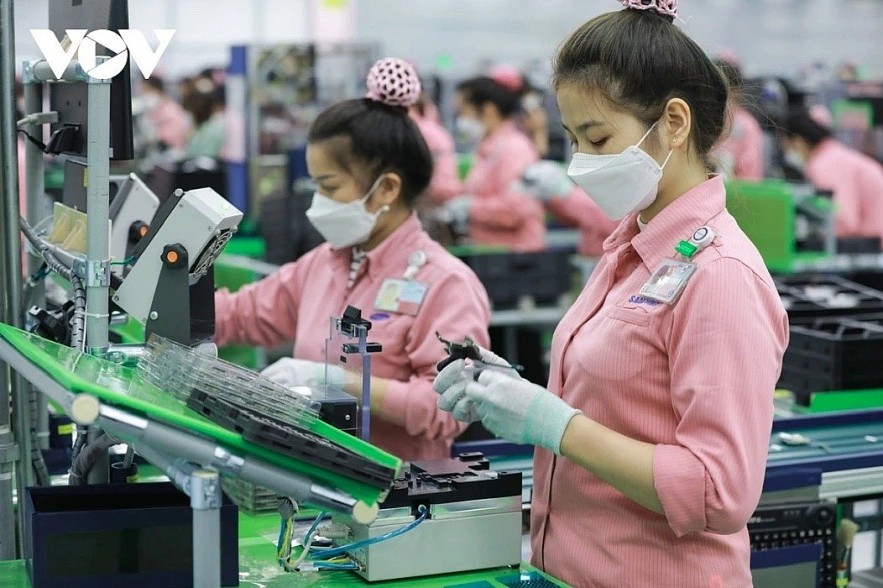 |
| Photo: VOV |
Processing and manufacturing took the lead, accounting for the lion’s share of the total registered sum, at 71.3% or US$3.09 billion. They were followed by real estate which registered US$1.09 billion in capital, occupying 23.5% of the total registered sum.
Also in January, 55 countries and territories poured investments into Vietnam. The Republic of Korea was the largest with US$1.25 billion, followed by Singapore with US$1.24 billion.
The foreign investors funneled their capital into 39 cities and provinces across the country, with Bac Ninh leading in FDI attraction with US$1.39 billion. Second and third places went to Dong Nai and Hanoi that lured some US$959 million and US$716.4 million, respectively.
In the reviewed period, around US$1.51 billion worth of FDI was disbursed, up 2% from last year.
Northern Vietnam braces for severe cold, temperatures drop below 2°C
A powerful cold wave will hit Northern Vietnam from February 7-8, bringing widespread freezing temperatures, with some high-altitude areas dropping below 2°C, possibly leading to frost and snowfall.
According to the National Center for Hydrometeorological Forecasting (NCHMF), a strong cold wave is currently moving southward from northern China and is expected to impact Vietnam starting February 7-8.
The cold air will first affect the northeastern region early on February 7, gradually spreading to northwestern provinces, North Central Vietnam, Central Vietnam, and parts of the South-Central region. Strong northeasterly winds of level 3-4 (gusting to level 6) will accompany the cold wave, particularly along coastal areas.
From the afternoon of February 7, Northern Vietnam will experience severe cold, followed by cold conditions extending to North Central Vietnam overnight. In the Quang Binh - Hue region, temperatures will drop significantly.
Temperature forecasts
Northern Vietnam: Lows between 9-12°C, with mountainous areas at 5-8°C. High-altitude regions may drop below 2°C, leading to frost and ice formation.
North Central Vietnam: Lows of 11-14°C.
Quang Binh - Hue: Lows of 14-16°C.
Hanoi: From the night of February 7, the city will experience severe cold, with temperatures ranging between 10-12°C.
This severe cold spell is expected to last until February 10 across Northern and North Central Vietnam, VNN reported.
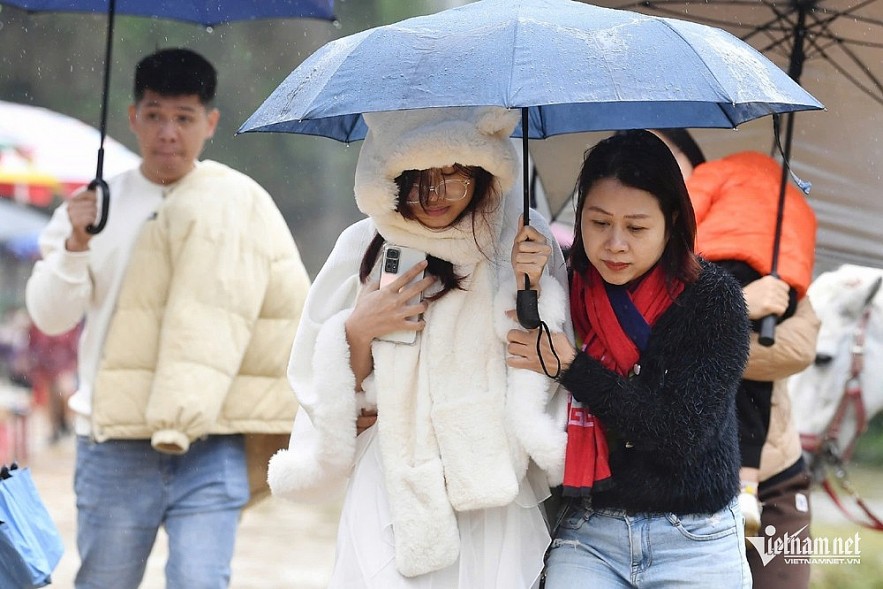 |
| Northern Vietnam will experience a prolonged period of cold and wet weather. Photo: Nam Khanh |
The strengthening cold air combined with upper-level westerly winds will bring widespread rain to Northern Vietnam and Thanh Hoa from February 6-8.
From February 7-9, Nghe An to Khanh Hoa will experience rain showers, with localized heavy rain and thunderstorms.
Thunderstorms may bring tornadoes, lightning, and strong winds.
High-altitude areas in Northern Vietnam could see frost and snow.
Before the cold air arrives, Northern Vietnam will experience morning fog and cloudy conditions, with some sunshine in the afternoon. Temperatures will drop sharply at night and early morning.
Northeastern Vietnam: Light rain and mist expected on the night of February 5 - morning of February 6.
Meteorologists warn that February 2025 will see more frequent cold waves than in previous years, particularly in the latter half of the month. These cold snaps will bring extended periods of severe cold to Northern Vietnam, Thanh Hoa, and Nghe An.
Marine weather conditions
From February 7, the Gulf of Tonkin will experience northeasterly winds of level 6-7, with gusts reaching level 8-9. Rough seas are expected, with waves between 2-3 meters.
Northern East Sea (including the Paracel Islands): Winds increase from level 6 to level 7, with gusts up to level 9. Waves 3-5.5 meters high will make sea conditions dangerous.
From February 7 onward, strong winds will extend from Quang Tri to Ca Mau, the central East Sea, and the western Spratly Islands.
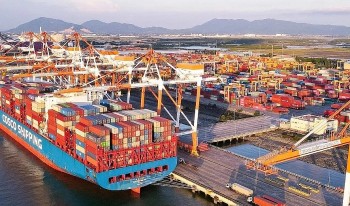 | Vietnam News Today (Feb. 2): Bustling Export-import Activities Signal Boon Year Ahead Vietnam News Today (Feb. 2): Bustling export-import activities signal a boon year ahead; Vietnam braces for intense cold wave in February, expert warns; HCM City ... |
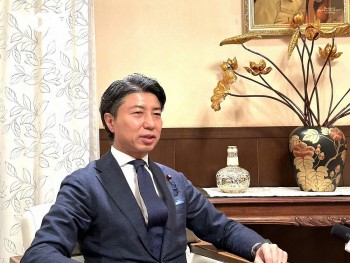 | Vietnam News Today (Feb. 3): Japanese Businesses Eye Vietnam as Attractive Investment Destination Vietnam News Today (Feb. 3): Japanese businesses eye Vietnam as attractive investment destination; Tet celebration helps OVs in Australia uphold traditional culture; Cold air mass ... |
Recommended
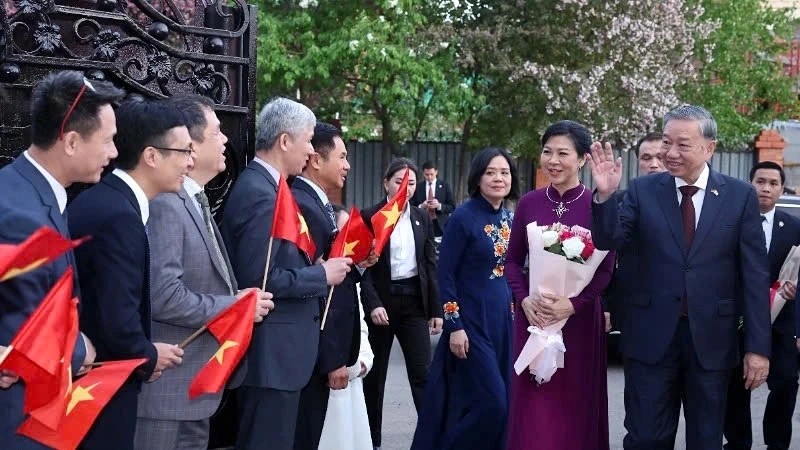 National
National
Vietnam News Today (May 6): Party Leader To Lam Meets Vietnamese Expatriates in Kazakhstan
 National
National
Boarding Kindergarten Children Supported with VND360.000/Month
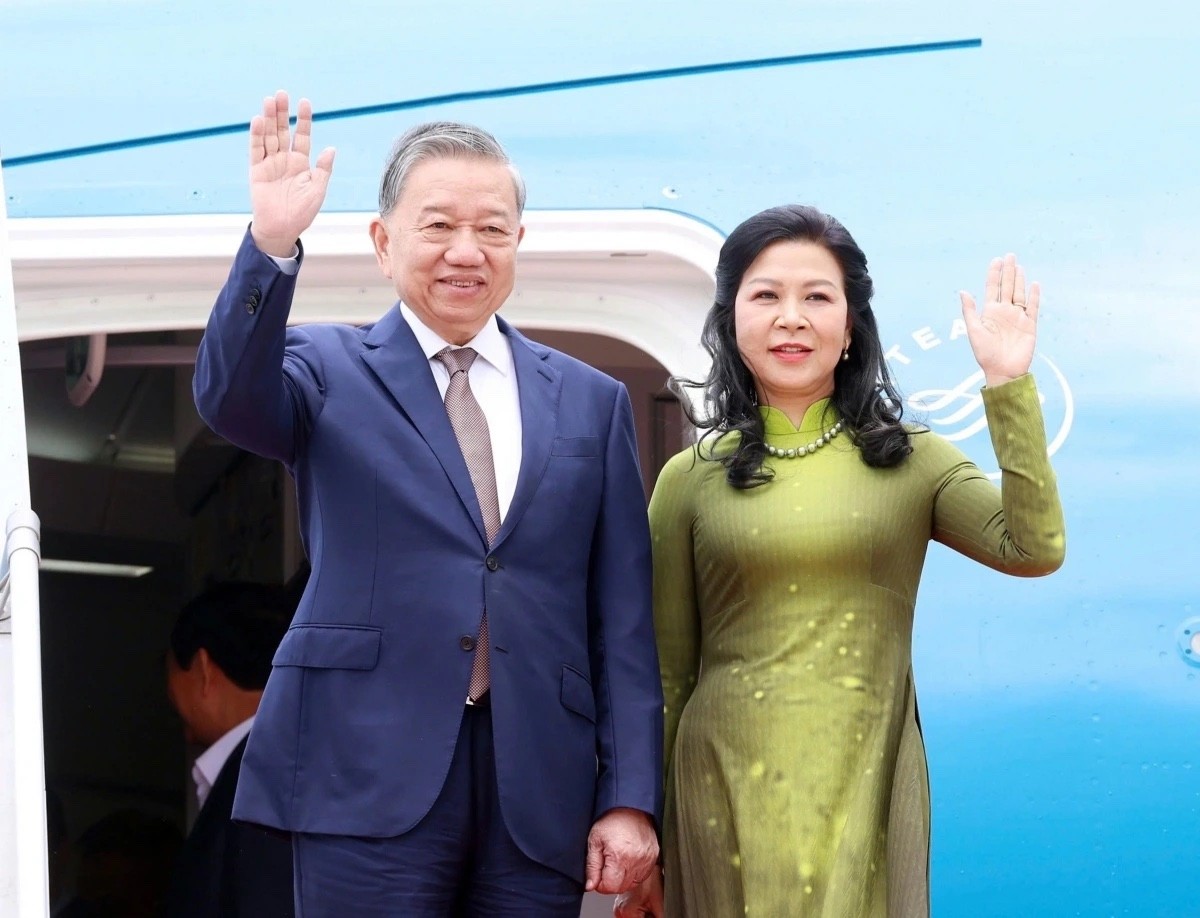 National
National
Vietnam News Today (May 5): Party Chief To Lam’s Trip to Russia Carries Special Strategic Significance
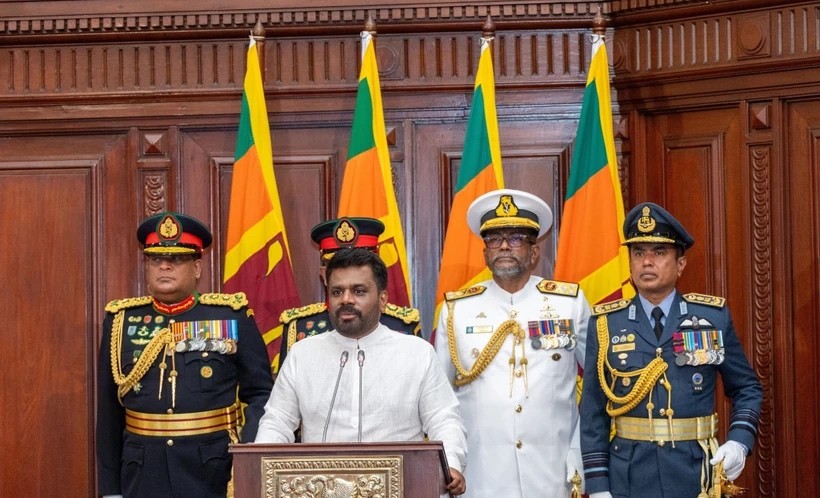 National
National
Vietnam News Today (May 4): Vietnam, Sri Lanka Deepen Traditional Friendship, Comprehensive Cooperation
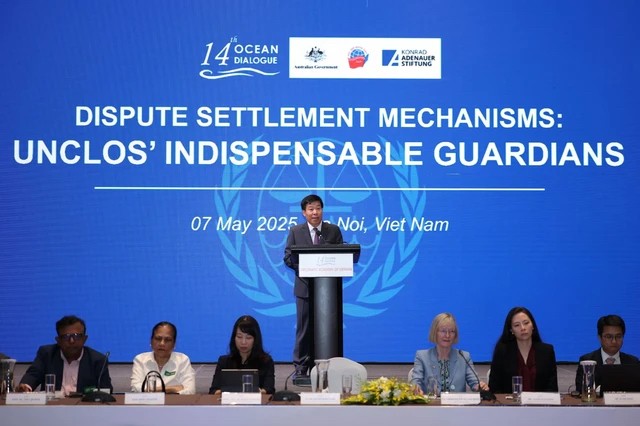 National
National
Vietnam News Today (May 8): Vietnam Remains Committed to UNCLOS
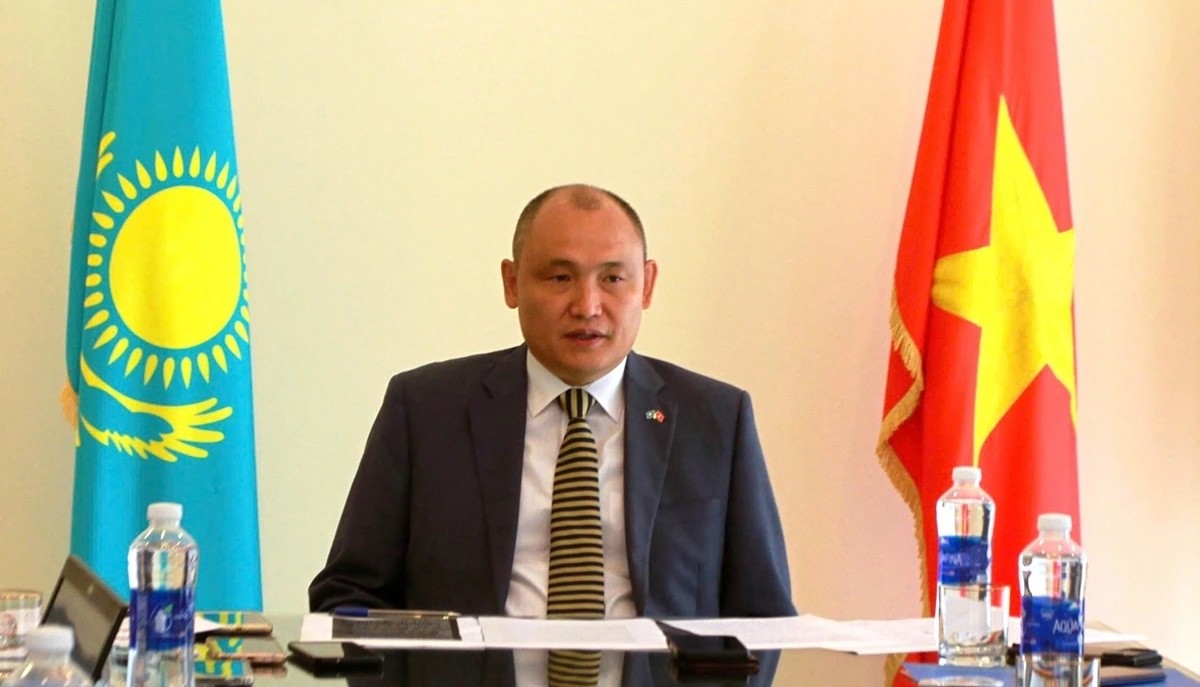 National
National
Vietnam News Today (May 3): Vietnam And Kazakhstan to Elevate Relations to Comprehensive Partnership
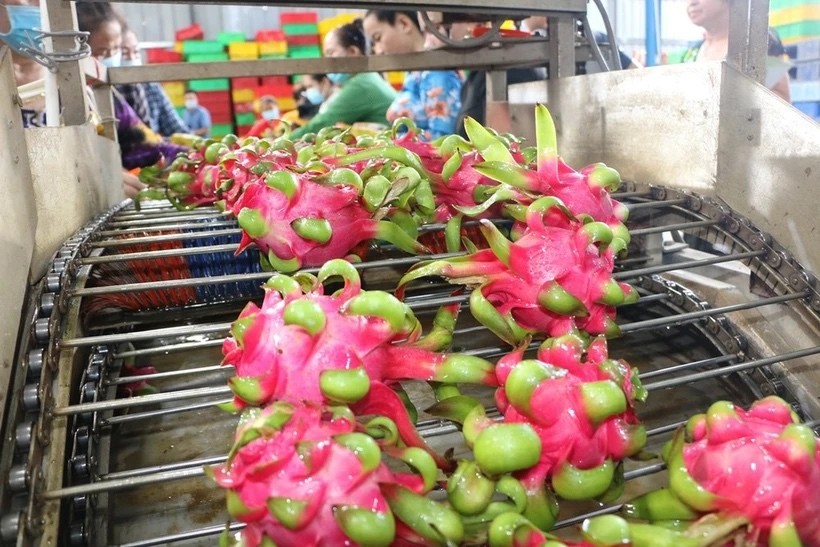 National
National
Vietnam News Today (May 2): Overseas Vietnamese Help Vietnamese Products Go Global
 National
National


